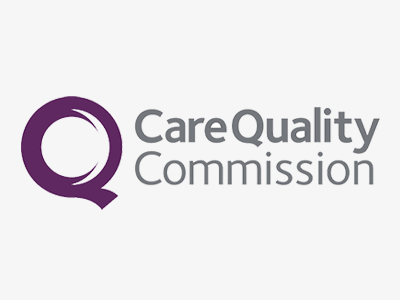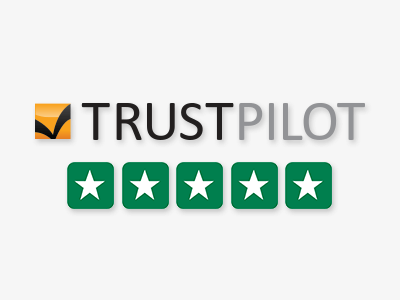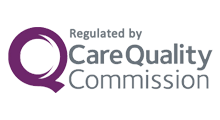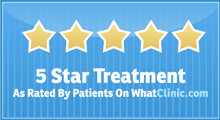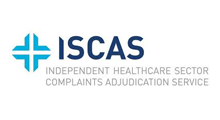Varicose Veins
Varicose veins are veins that are either over stretched, enlarged or swollen, usually in the legs, which can be felt under the skin and sometimes prominently visible to the eye.
They can also appear in the feet and other parts of the body.
Varicose veins can vary in how they look and feel. They are often lumpy, can appear to bulge the skin and be purple / blue in appearance.
For people with varicose veins, symptoms can often be felt in a number of ways and can be worse in different conditions, such as hot weather or if you stand for a long time at work. Sometimes moving about or raising your legs when you sit down can help ease symptoms.
Common symptoms of varicose veins include:
- Swollen ankles
- Swollen feet
- A burning sensation in legs
- Throbbing
- Leg muscle cramps
- Itchy, dry skin on or around the affected area.
A varicose vein can develop when your blood does not flow as it should through the affected area.
Blood should flow in one direction, via the valves inside your veins.
However, issues with the vein valves can sometimes result in the blood flowing backwards and pooling in the vein. The increased pressure can cause swelling in the vein.
If this occurs in the veins that are near the surface of your skin (also known as a superficial vein), a varicose vein can develop.
Many people who do not have symptoms of discomfort, often do not feel that varicose veins are bothersome.
Whereas others can be deeply affected by the appearance of varicose veins and feel they need to seek help.
There are many treatments available for varicose veins, which can be assessed during a consultation and advised upon by a vein specialist.
What Varicose Vein Treatments Are Available?
For patients who suffer with varicose veins, there are many treatment options available to combat the problem area. Available treatments are both surgical and non-surgical.
Depending on the severity of your varicose veins and how bothersome they are, your specialist can advise and discuss your options on an individual basis and help you identify whether or not you are an ideal candidate for vein surgery.
Treatments include:
Surgical vein removal
Varicose vein surgery often involves removing the problematic vein completely.
Whilst this can sometimes sound daunting, it is a common procedure that does not affect the blood flow around the body or to the heart. This is because the blood flows through alternative veins instead.
The procedure to remove a varicose vein is performed under general anaesthetic.
You will be put to sleep whilst your surgeon fully removes the problem vein. If you have an issue with general anaesthetic, other options are available, which can be discussed in your consultation.
Surgery tends to take up to one hour and is performed by making an incision at the back of the knee or in the groin.
If the complete vein is being fully removed from the leg for example, multiple incisions will be required. These small cuts leave minimal scarring and are closed with stitches during the end of the surgical procedure.
Following surgery, legs are wrapped in bandages to reduce any bleeding and apply pressure. This also helps keep bruising to a minimum.
Varicose vein surgery is usually done as a day patient procedure and patients can return home the same day. In some circumstances, an overnight stay in hospital may be required, which your surgeon will advise you on.
Removing varicose veins is commonly performed using a surgical technique known as ligation and stripping.
The problem veins are tied off and then removed. This is done by making small incisions in the leg by the groin and further down by the knee. Incisions are usually no larger than 2 inches and do not leave much scarring.
Endovenous laser treatment
This method of treatment is carried out using a laser tube, which inserts in to the problem vein through a small incision.
The laser then heats up the inside of the vein, which makes it close over.
Endovenous laser procedures are usually carried out using local anaesthetic, rather than the more intense surgery treatment that requires general anaesthetic.
The area containing the varicose vein becomes numb so patients do not feel pain and the procedure takes up to one hour per treatment.
Following the laser probe treatment, patients are required to stay as an outpatient for up to three hours to be observed then will be able to return home. For up to 2 weeks after the treatment, patients may be required to wear bandages for support at home.
Sclerotherapy treatment
Sclerotherapy is a form of treatment whereby the varicose veins are injected with a chemical that forces it to close.
The vein becomes redundant and no longer functions as it used to. Therefore, no blood passes through it and the veins become less visible and do not bulge as much.
Support stockings are provided to patients and will need to be worn for up to six weeks post treatment.
This treatment method is only available on smaller varicose veins.
Radiofrequency ablation
Radiofrequency ablation is a medical procedure and technique used on varicose veins along with other parts of the body.
This treatment is similar to sclerotherapy in that it closes the vein. However, rather than using a chemical, the procedure uses medium frequency alternating current, which collapses and seals shut the problem vein.
Once the vein shuts, other healthier veins are used to transfer blood around the body instead.
This procedure is also performed as an outpatient and patients return home the same day.
Why Choose Varicose Vein Removal
There are a number of reasons why people choose to have treatment for varicose veins. For some, they do not have any symptoms and seeing them does not bother them either. But for others they are very symptomatic and do not like the way they look.
Having prominent varicose veins can sometimes make people feel self conscious and have low self esteem. The thought of going on holiday or putting on a dress or pair of shorts on at hot summers day can cause stress and anxiety.
Removing varicose veins can sometimes remove this stress and anxiety and make feel more confident and secure in themselves.
Some of the reasons why people choose to remove their varicose veins include:
- To remove bulging and lumpy veins in their legs
- To ease aching or the heavy feeling that can occur with varicose veins
- To stop night time cramping
- To improve the skin feel and appearance around the problem area
- To stop feet, leg and ankle swelling caused by varicose veins.
- To boost self confidence and self esteem
- To be able to wear open clothing such as skirts, dresses and shorts
- To take away the burden of feeling the need to hide legs / cover up with trousers and other clothing
Recovery & Aftercare
Depending on the type of varicose vein treatment you opt for, recovery and aftercare can differ in some ways, but remain the same in other ways.
Once your procedure has finished, you will be taken to a recovery room (general anaesthetic) or outpatient clinic (local anaesthetic), where you will be monitored in the hours that follow, including taking your blood pressure and pulse.
Once the anaesthetic wears off, you will be able to eat / drink and will be required to do a water sample before being discharged for home.
Before going home, you will be given an aftercare plan and told what to expect in the coming days / weeks.
Being active with small levels of activity can be good for circulation, rather than staying sedentary. However, it is common to feel some level of anxiety when getting up and walking for the first few times.
Your aftercare plan / pack may include bandages for dressing wounds, stockings to support your legs and blood circulation and pain killers.
It is important to follow your aftercare plan as closely as possible for up to six weeks post surgery, including sticking to the advice of your surgeon on how long to wear support stockings for.
Resting is fine for the first 2-3 days after your varicose vein procedure, however it is important and recommended to slowly increase the amount of activity you do each day for the following 10-14 days.
When resting, it is advised that you elevate your legs / feet to help with blood flow.
Showers are also recommended over baths to avoid complications with wounds.
Once wounds have healed, patients are often able to return to work after a fortnight, providing that no strenuous activity takes place and depending on your job role. Driving a car is fine after 7 days providing that patients are comfortable with pedal operation and manoeuvres.
Complications & Side Effects
As with all types of surgery, there are risks, complications and side effects associated with varicose vein procedures.
These include;
- The feeling of tingling around the incisions in the legs.
- Numbing of the area where the vein has been removed.
- Lumps can develop in the groin, which can be filled with blood, known as a haematoma. These require draining by a surgeon.
- Discolouration of the skin where the vein used to be.
- Injury to arteries, veins or surrounding tissue, although this is very rare.
- Deep vein thrombosis, also known as DVT. This is the presence of a blood clot that has formed at some point during your surgery or aftercare. Clots can break up and move through the blood, causing complications with the lungs such as pulmonary embolism.
It is extremely important to look out for any symptoms of deep vein thrombosis after your surgery, such as;
- Warm sensation in the legs
- Leg pain
- Swollen legs
- Red tinged skin in the treated area
- Infection
Why Choose Us?
At the Manchester Private Hospital, we always ensure the safety of our patients and provide a pressure free environment for people to make their own informed decisions on treatment.
We understand the worries and anxiety surrounding surgery / treatment and know that it is not a decision that can be taken lightly.
Our friendly, helpful team of experts are trained to put your mind at ease and provide you with everything you need to know about varicose veins and the options available to you.
Our reputation and ethics speak for themselves. We have carried out a high number of procedures for varicose veins to the highest possible standards of expertise and care.
We welcome the decision to book a hassle free no obligation consultation with our qualified surgeons to discuss your options and ask as many questions as you like.
Call us today on 0161 507 8822 to speak about your varicose veins and chat on a personable level about any concerns you may have.
BREAST AUGMENTATION
Breasts are symbol of women sex appeal and with proper breasts one looks good and gorgeous. Breast Augmentation is best way to build confidence with a figure that you always yearned for. FDA has marked both saline and silicone gel breast implant as safe where silicone is more popular and has more natural like feel. It can be done according to
requirement with different size and shape as different women needs particular attention.
When Does One Need Breast Augmentation?
Not all female need it but it is usually done by ladies who are trying to accentuate their shape and figure.
- It is mostly done by females with smaller breasts to get a proper shape and look good.
- Sometime both breasts are not of same size, in order to negotiate with
this augmentation is done. It helps in shaping up and brings them on equal scale - Tightening of sagging and lose breast to make it firmer.
- Make breast fuller after weight loss.
Procedure For Breast Augmentation
It is done surgically and performed on the patient with use of general anaesthesia. In order to numb the patient with unconsciousness, it can also be performed with use of deep sedatives that cause nerve blockage. The methods are practised safely with less pain and quick recovery. The operation is not very complicated but need to be precise which usually takes 2 hours. After the surgery, doctor will check you routinely to ensure everything is good.
Post Surgery Recovery Time
The recovery time after breast augmentation depends on the type of breast surgery but in both cases it doesn’t take a long time and before you know, you are ready to dress up the gorgeous way. If the implantation is done on sub glandular side it might take few days to recover. If the surgery is sub muscularly done, it might take a week to recover. In both cases it will not take lot of time and in maximum a month, you are ready to flaunt your implantations.
Post Surgery
It is a surgery and there is something that is implemented on your body externally which is which discomfort for few days is absolutely normal. Post surgery there are complains about sore breast and slight pain. The pain generally is not very severe and can be controlled by medicine prescription. Immediately after the surgery it is highly recommended to rest because it takes few days to heal. If your work requires some heavy load and travel, you might not be able to go back to work post surgery. However, after 3 to 4 weeks you completely heal and will be able to continue with your daily schedule. The doctor is always there if there is any problem or guidance required.
Patient Testimonials
My experience of undergoing a Boob Job at Manchester Private Hospital was definitely memorable. I was little apprehensive about the whole thing before fixing up my appointment with the Breast Enlargement Surgeon. I must admit, it was the free counselling which gave me enough motivation to re-look at myself and of course believe my breasts can look different with Breast Enhancement. It’s been a month after I decided to go in for it and I’m absolutely happy about my choice of treatment and the clinic. Thanks to Manchester Private Hospital.
Even though I always wanted to give it a shot at Breast Enlargement Surgery in London, I never had enough motivation to go for it. Needless to mention that I used to be utterly dissatisfied with the size of my breasts, adding more stress to my life which was already troubled with few other challenges. There used be a lot of negative psychological impact with mixed set of emotions and I had to come to terms with the fact that cosmetic way of Breast Enhancement could be the only option. When I made that effort to walk into the Manchester Private Hospital and interacted with the team of experts, I knew it was worth taking the risk, even if it may seem so. The outcome was excellent and the surgeons out there did a fantastic job in making me feel great about my own self, yet again. To my impression, the facilities and professional medical services they offer at the hospital were outstanding. Along with fuller and bigger breasts, I also experience great sense of satisfaction which continues to motivate me in many ways.
I came across the Manchester Private Hospital’s website and felt good about their work in the area of Breast Enlargement Surgery. It was also the time when I was looking for a better option to enhance the image of my breasts as I also understood that there was no way my boobs would grow any further by natural means. It was more or less inevitable that I must opt for a cosmetic enlargement procedure and fortunately breast enhancement came across to me like a safe and reliable treatment. My initial phase of flirting with the idea of going ahead with the treatment was difficult. But for the patient counselling and motivation I received from the experts at the hospital I wouldn’t have readily opted for it. The whole treatment procedure went on well with best possible support and care by the team of cosmetic professionals at MPH. I’m glad I came across this option and I love my new set of breasts after the augmentation therapy.
From the time I knew Breast Enlargement Surgery would be the best bet for me to revive my youthful appeal, I was looking around for the best centre in the city. It takes a lot of effort to scrutinise from the various options and it’s obvious from my initial impression that I was walking into the Manchester Private Hospital to explore more. I did want to get first hand information and validate their claims. Thankfully I found the people at cosmetic clinic friendly and approachable. The consultation session was very productive and even realistic which made me to opt for getting my Breast Enhancement done at MPH. That was a decision I may never regret and will remain memorable for long as the results are pretty close to my expectations. The entire process of counselling and post therapy guidance had helped me to stay focused and experience the best outcome within few weeks of my treatment.
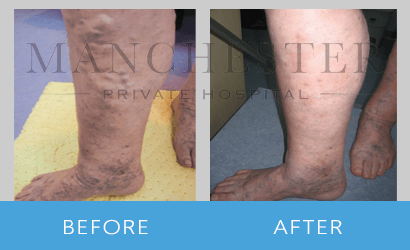

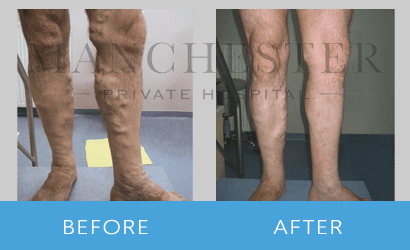
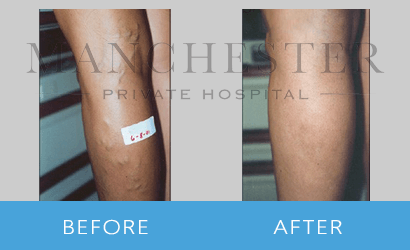
Varicose Vein Removal - FAQs
Varicose Vein Removal - Price
Laser Treatment or Mechano-Chemical Ablation (MOCA) from £2000.00 for one leg
Foam Sclerotherapy start from £500.00
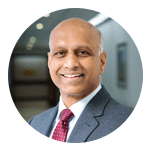
About The Doctor
Mr Ramasubramanyan Chandrasekar
My philosophy in treating patients is simple – I aim to treat them, as I would like to be treated! I explain to patients in clear and simple language, usually with the help of diagram, and offer them treatments that are effective, durable and usually delivered in one session.I have been a Consultant Vascular Surgeon for nearly 15 years.

